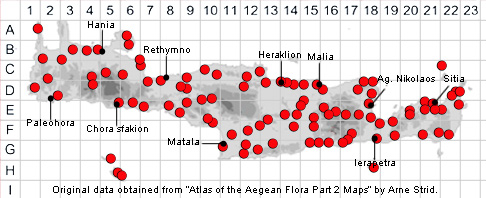SPECIES DESCRIPTION
MEDICAGO TRUNCATULA
Family and Genus:- See- LEGUMINOSAE/Subgen. CYMATIUM
Common Names:- Early medick
Homotypic Synonyms:- None
Meaning:- Medicago (Gr) Median-grass, A name used by the Greek physician and
botanist Dioscorides, from a Persian name for lucerne, or medick.
Truncatula (L) Cut off blunt-ended.
General description:- Sparsely annual with long, villous.
Stem:-
1) Up to 50 cm.
Leaves:-
1) Leaflets, obovate or obcordate, cuneate, denticulate near the apex,
2) Stipules, ovate-lanceolate to narrowly lanceolate, incise-dentate or laciniate in
the lower half.
Flowers:-
1) Racemes, 1- to 3(-5) flowered.
2) Corolla, 5-6 mm
Fruit:-
1) Legume, 5-8 mm in diam, in a spiral of 3-6 turns, cylindrical, nearly always
sparsely villous, spiny; transverse veins scarcely anastomosing, joining a very
thick submarginal vein separated from the slender but distinct marginal vein by
the groove; spines up to more than half as long as the diameter of the legume,
curved or uncinate, each arising partly from the marginal and partly from the
submarginal vein.
Key features:-
1) Racemes, usually with 1-3 flowers.
2) Legume, nearly always sparsely villous, always spiny; spines usually long,
curved.
Habitat:- Sandy coastal habitats, dry open shrubby vegetation, field margins, dry
grassland, archaeological sites. 0-800 m. (occasionally higher).
Distribution:- Throughout Greece. - Mediterranean region, naturalised or casual
elsewhere. On Crete widely scattered.
Flowering time:- Mar-May.
Photos by:- Len Worthington
